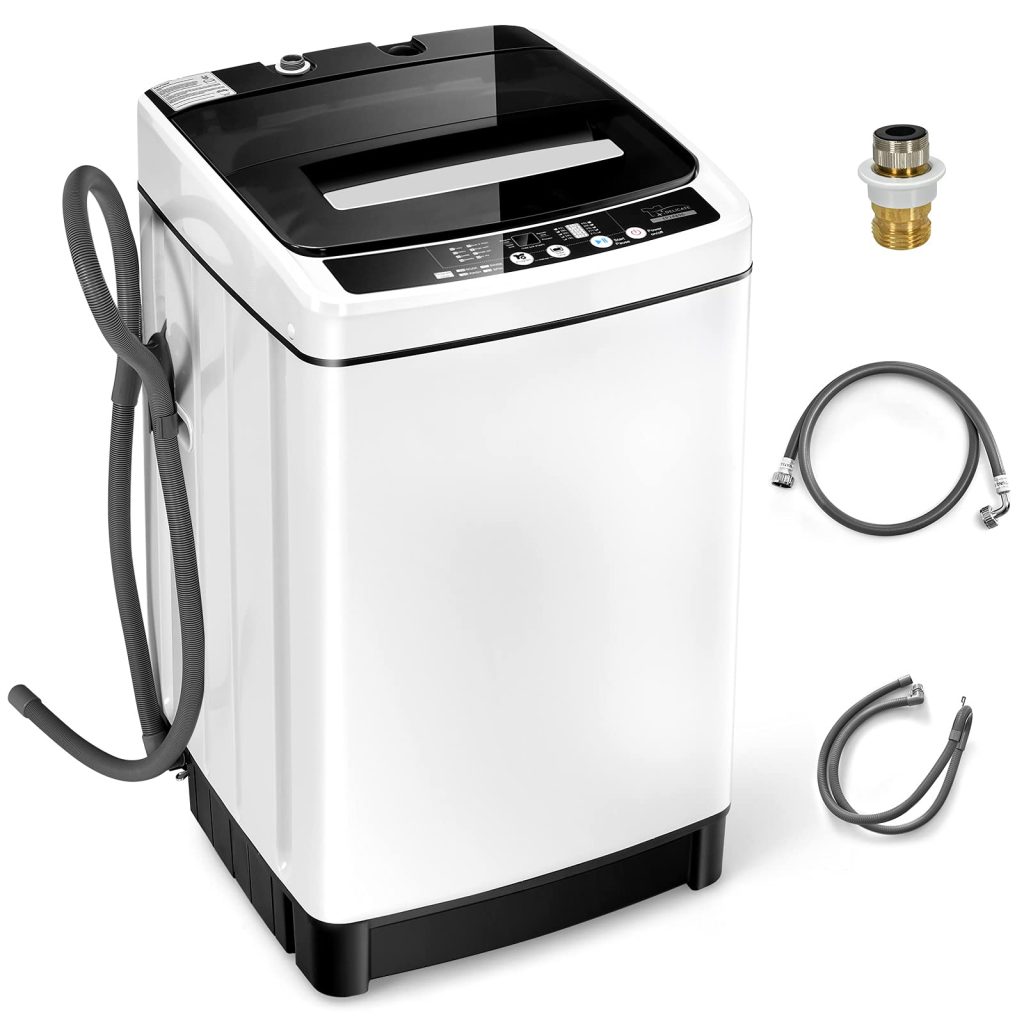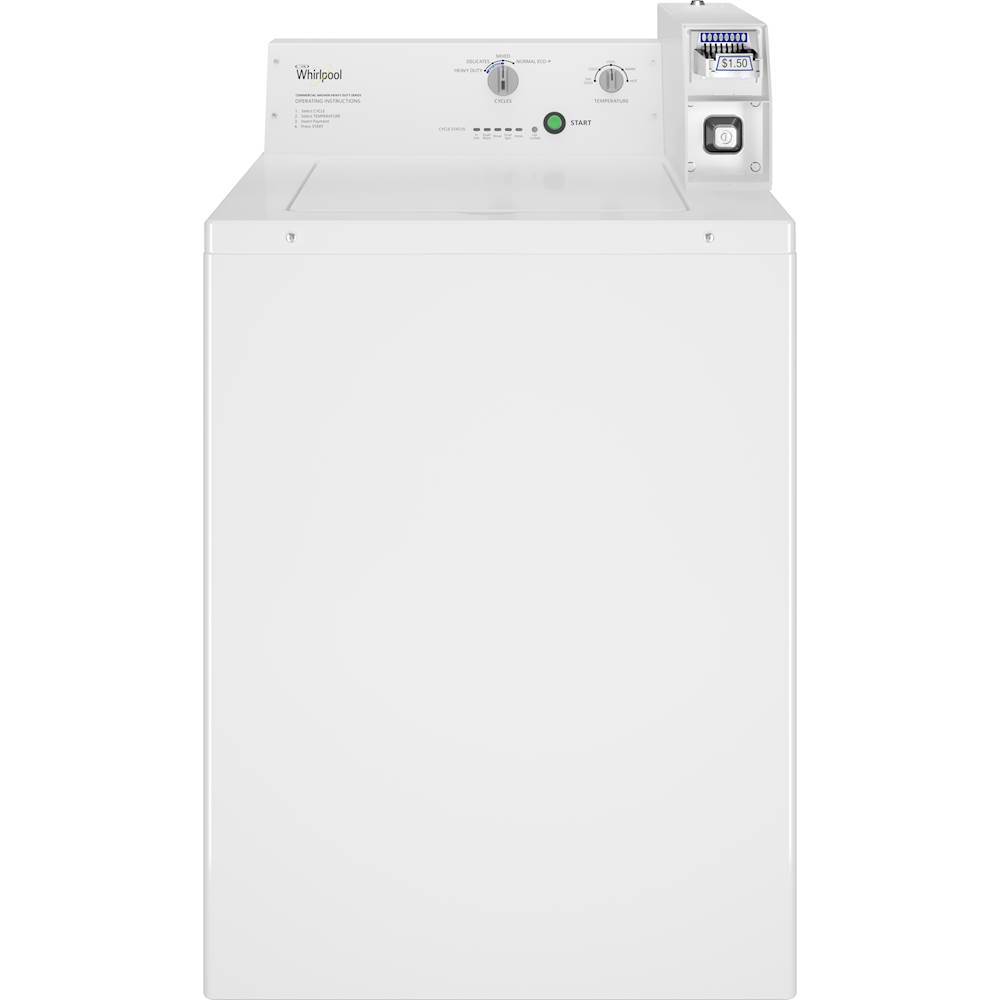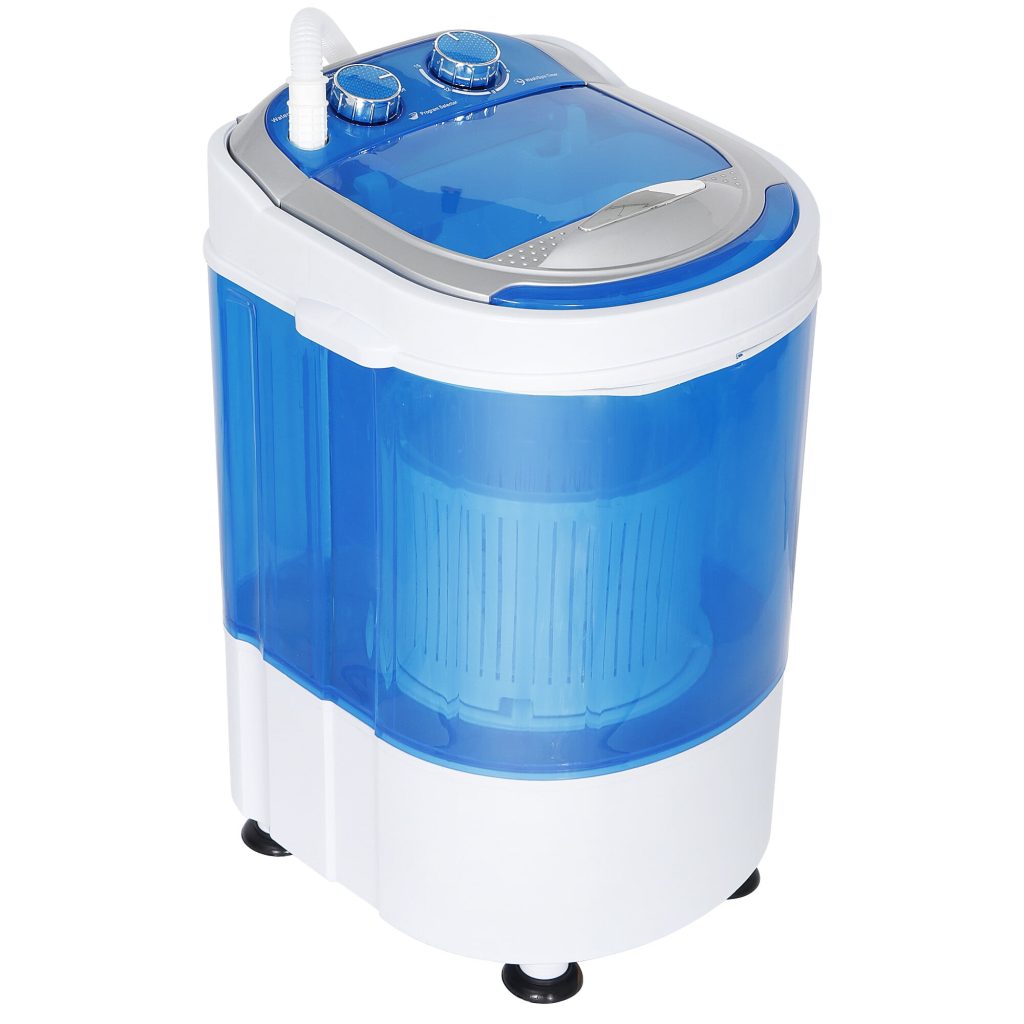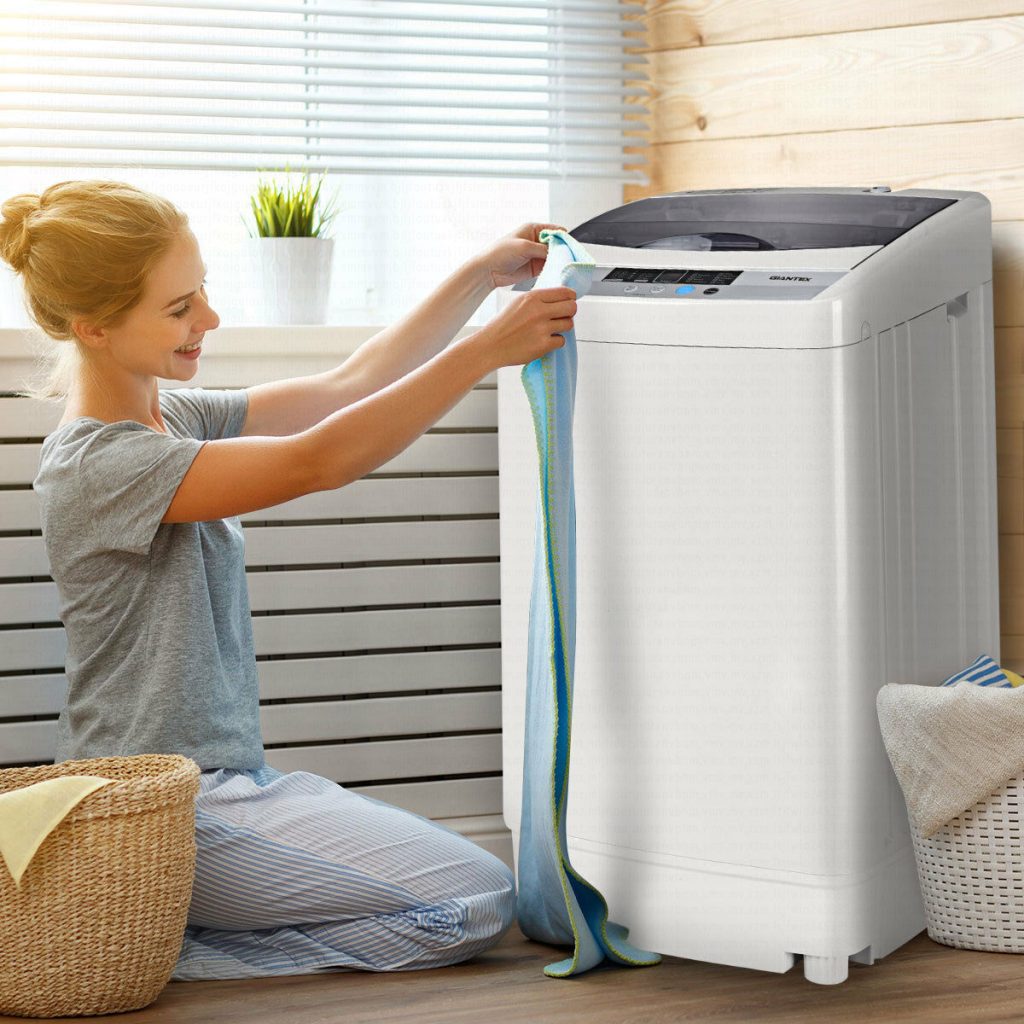Introduction:
A washing machine that’s not spinning but making noises can be frustrating and worrying. The non-spinning prevents your clothes from being washed and rinsed properly, while the noises can indicate an underlying problem that needs attention. Even the newest washing machines of 2024 can have problems.

Unbalanced Load:
Cause: An unbalanced load is a common reason for a washing machine not spinning and making noise. The machine’s sensors detect the imbalance and stop the spinning cycle to prevent damage.
Troubleshooting: Pause the cycle and redistribute the load evenly in the drum. If necessary, remove some items to achieve a balanced load. Restart the cycle and monitor if the machine spins without noise.
Overloaded Drum:
Cause: Overloading the washing machine can put excessive strain on the drum and motor, resulting in a lack of spinning and increased noise.
Troubleshooting: Remove some items from the drum to reduce the load. Follow the manufacturer’s guidelines regarding the maximum load capacity for your specific model. Restart the cycle and monitor if the machine spins properly without excessive noise.
Drive Belt Issues:
Cause: A worn or damaged drive belt can cause the washing machine to not spin properly and produce unusual noises.
Troubleshooting: Unplug the machine and carefully inspect the drive belt for signs of wear, fraying, or damage. If necessary, replace the drive belt with a new one following the manufacturer’s instructions.
Motor Problems:
Cause: Motor issues, such as a worn-out motor or faulty motor components, can prevent the washing machine from spinning and create unusual noises.
Troubleshooting: Contact a professional technician or the manufacturer’s customer support to diagnose and repair any motor-related problems. It is not recommended to attempt motor repairs without proper expertise.
Lid Switch Malfunction:
Cause: A malfunctioning or faulty lid switch can disrupt the spinning cycle and cause noise in the washing machine.
Troubleshooting: Check the lid switch for any signs of damage or misalignment. If necessary, replace the lid switch following the manufacturer’s instructions. Ensure that the lid is properly closed during operation.
Suspension Springs or Damper Issues:
Cause: Worn or damaged suspension springs or dampers can affect the stability and balance of the drum, leading to a lack of spinning and creating noise.
Troubleshooting: Inspect the suspension springs and dampers for signs of wear or damage. If necessary, replace them with new ones according to the manufacturer’s guidelines.

Drum Bearings Problems:
Cause:
Worn or faulty drum bearings can result in a lack of spinning and generate excessive noise during operation.
Troubleshooting:
Contact a professional technician or the manufacturer’s customer support to diagnose and replace the drum bearings. This repair typically requires specialized tools and expertise.
Floor and Leveling Issues:
Cause: A washing machine that is not properly leveled or placed on an uneven floor can cause it to vibrate excessively and create noise during spinning.
Troubleshooting: Use a level to ensure that the machine is properly leveled. Adjust the leveling feet or add shims under them as needed to achieve a balanced position. Additionally, make sure the machine is placed on a stable and even surface.
Regular Maintenance:
Regularly clean and clean Pillows in a Washing Machine according to the manufacturer’s instructions. This includes cleaning the drum, filters, and detergent dispensers to prevent buildup and potential spinning issues.

Solution to Washing Machine Not Spinning but Making Noise
A washing machine not spinning but making noise can be a frustrating issue to deal with. There are several possible causes behind this problem, ranging from a simple unbalanced load to more complex mechanical issues. In this article, we will provide a troubleshooting guide to help you identify and resolve the problem when your washing machine is not spinning but making noise.
Check for an Unbalanced Load:
An unbalanced load is one of the most common reasons why a washing machine may not spin but instead make noise. Pause the cycle and rearrange the clothes to distribute them evenly in the drum. Ensure that the weight of the load is evenly distributed to avoid movements and vibrations that can cause washer making noise but not spinning during the spin cycle.
Verify the Machine’s Stability:
Ensure that your washing machine is properly leveled and stable. Uneven flooring or an improperly leveled machine can cause excessive vibrations and noise during the spin cycle. Use a spirit level to check the machine’s balance and adjust the leveling feet if necessary. Additionally, place an anti-vibration mat or rubber pads under the machine to absorb vibrations and reduce noise.

Inspect the Drive Belt:
A worn or broken drive belt can prevent the washing machine drum from spinning. If you hear a humming noise or notice that the drum is not rotating, the drive belt may need to be replaced. Refer to your washing machine’s manual for instructions on how to access and inspect the drive belt. If you find any signs of damage or wear, consider replacing it with a new one.
Examine the Motor Coupler:
A faulty motor coupler can also prevent the Washing Machine Spinner from spinning. The motor coupler connects the motor and the transmission. If it is broken or damaged, the washing machine making noise but not spinning. Consult your washing machine’s manual for guidance on how to locate and inspect the motor coupler. If necessary, replace the faulty coupler with a new one.
Clean or Replace the Drain Pump:
A clogged or malfunctioning drain pump can lead to noise and prevent the washing machine from spinning. Check if there are any foreign objects, debris, or lint obstructing the drain pump. Clean the pump by removing any blockage or replace it if it is damaged or worn out. Consult the manual for specific instructions on how to access and clean or replace the drain pump.
Inspect the Motor Bearings:
Worn or faulty motor bearings can cause excessive noise and prevent the washing machine from spinning properly. To inspect the motor bearings, refer to your washing machine’s manual for instructions on accessing the motor. If you find any signs of wear or damage, consult a professional technician to replace the bearings to ensure proper functioning.
Consult a Professional Technician:
- If you have exhausted all the troubleshooting steps mentioned above and the problem persists, it is advisable to seek assistance from a professional technician. They have the expertise and specialized tools to diagnose and repair complex issues. Trying to fix advanced mechanical problems without proper knowledge and skills can cause further damage to the machine.
- A washing machine not spinning but making noise can be concerning, but by following these troubleshooting steps, you can potentially identify and resolve the problem without the need for extensive repairs or replacements. Remember to check for an unbalanced load, verify the machine’s stability, inspect the drive belt, examine the motor coupler, clean or replace the drain pump, and inspect the motor bearings.
Precautions for using washing machine
Read and Understand the User Manual:
Before using a washing machine, carefully read and understand the user manual provided by the manufacturer. The manual contains important information about the machine’s features, operating instructions, safety precautions, and maintenance requirements. Familiarize yourself with the specific functions and settings of your washing machine model.
Loading Guidelines:
Properly loading the front-Loading Washing Machine is crucial for efficient and effective cleaning. Do not overload the machine, as this can lead to poor washing results, increased wear on the machine, and potential damage. Follow the recommended load capacity guidelines specified in the user manual. Distribute the clothes evenly in the drum to maintain balance during the wash cycle, preventing excessive vibrations.
Detergent Selection and Usage:
Choose a suitable detergent based on the type of fabric, water hardness, and the machine’s recommendations. Follow the manufacturer’s guidelines regarding detergent quantity to avoid using excessive amounts, which can lead to detergent residue buildup and poor rinsing. For heavily soiled garments, pre-treat stains with a stain remover before placing them in the washing machine.
Temperature Settings:
Understand the temperature settings available on your use a Washing Machine. Different fabrics and stains require specific water temperatures for optimal cleaning results. Cold water is generally suitable for delicate items, preventing shrinkage or color fading, while hot water is effective for removing tough stains and disinfecting. Use the appropriate temperature setting based on the fabric care labels and the nature of the stains.

Conclusion:
A washing machine that is not spinning but making noise can be a source of frustration. By understanding the potential causes and following the appropriate troubleshooting steps, you can identify and resolve the issue. From redistributing an unbalanced load to addressing motor or drive belt problems, each troubleshooting step plays a crucial role in restoring proper spinning and reducing noise. Regular maintenance and adhering to the manufacturer’s guidelines will help keep your washing machine running smoothly and efficiently. Enjoy the peace of mind of a properly working washing machine, allowing you to clean your laundry effectively and without unnecessary noise or disruptions.





